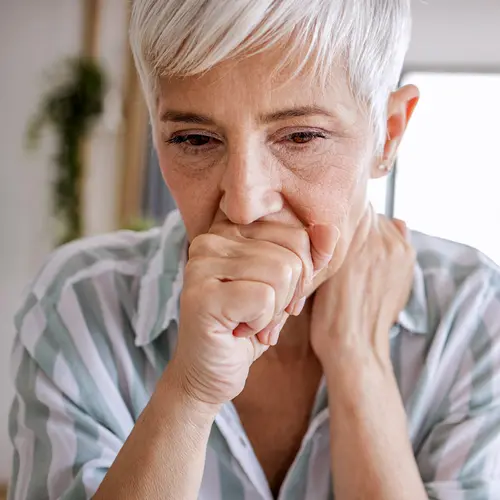About 80% of people who have lung cancer have non-small-cell lung cancer. NSCLC usually spreads more slowly than small-cell lung cancers.
Both cancers affect the lungs and have similar symptoms, but they’re treated differently.
Types
There are three main categories of NSCLC:
Adenocarcinoma: This is the most common type. It usually spreads more slowly than others, and it's more likely to be found earlier. It's often linked to a history of smoking, but it is also the most common type of lung cancer seen in nonsmokers.
It starts in the cells that make mucus, and it’s usually found in the outer parts of your lung.
Squamous cell (epidermoid) carcinoma: This starts in the lining of the airways in the lungs. About a quarter of all lung cancers are this type. It's often linked to a history of smoking.
Large-cell (undifferentiated) carcinoma: This fast-growing cancer can be in any part of the lung. Because it spreads quickly, it can be harder to treat. About 10% of non-small-cell lung cancers are this type.
Causes
Most lung cancers are linked to smoking. Many people who get lung cancer either smoke or have been around people who smoke.
Other things that make lung cancer more likely include:
- Asbestos
- Radon
- Air pollution
- Radiation treatments to your chest or breast
- Family history of lung cancer
- Arsenic
- HIV/AIDS
- Mineral and metal dust
Symptoms
You may not have any. NSCLC might be found during an X-ray or other exam you may have for something else.
If you do have symptoms, they can include:
- Chest pain
- A cough that doesn’t go away or gets worse
- Trouble breathing
- Coughing up blood or mucus
- Wheezing
- Hoarseness or other voice changes
- Weight loss or little appetite
- Feeling weak or tired
- Trouble swallowing
If the cancer spreads to other parts of your body, you might have:
- Headache
- Back or bone pain
- Yellow skin or eyes (jaundice)
- Blurred vision
- Dizziness or balance problems
- Loss of bowel or bladder control
Diagnosis
Your doctor will do an exam and ask you questions about your symptoms. They’ll ask whether you smoke or have been around people who smoke. You might need tests to look for tumors in your lungs and to see whether the cancer has spread.
Tests might include:
- Lab work, including blood, tissue, and urine tests
- Imaging tests like X-rays, MRIs, PET scans, and ultrasounds
- Sputum cytology, a check of your mucus for cancer cells
- Thoracentesis, a procedure where fluid is taken from the space between the lining of your chest and your lung. The fluid is then checked for cancer cells.
- Biopsy, where your doctor will remove a small piece of tissue to look for cancer cells
Stages
Based on what your doctor finds, your cancer will be assigned a stage. It takes into account three things you may hear called TNM:
- Tumor -- the size of the main tumor
- Node -- if the tumor has spread to the lymph nodes
- Metastasis -- whether the cancer has spread (metastasized) to any other places on your body
These three things are used together to determine the lung cancer stage: I, II, III, or IV. Some stages are subdivided into A and B. The lower the stage, the better your chances for recovery.
Treatment
There are many of them for non-small-cell lung cancer. They're based on the spread of the cancer, as well as your overall health.
Surgery: If you have early-stage cancer, your doctor will probably suggest you have surgery to remove it. You could have all or part of your lung removed.
Radiation: This can kill the cancer cells left after surgery or may be the main treatment in place of surgery. Radiation can also shrink tumors before surgery so they're easier to remove. It uses high-energy rays to target cancer cells.
Radiofrequency ablation: High-energy radio waves are used to heat the tumor. Then electric current is passed through a probe to destroy your cancer cells. This is an option if you have small tumors that are near the outer edge of your lungs.
Chemotherapy: These drugs can be taken by IV or pills to help kill the cancer. You may get them before or after surgery, with radiation, or as the main treatment.
Targeted therapy: This focuses on the changes your cells go through when you get NSCLC. You’ll usually get this when your cancer has spread. Sometimes you’ll take these drugs along with chemotherapy.
Immunotherapy: This helps your own immune system fight your cancer. It does this by making it easier for your body to recognize and destroy cancer cells. You’ll usually get this if your NSCLC is advanced, or after other treatments haven’t worked.

